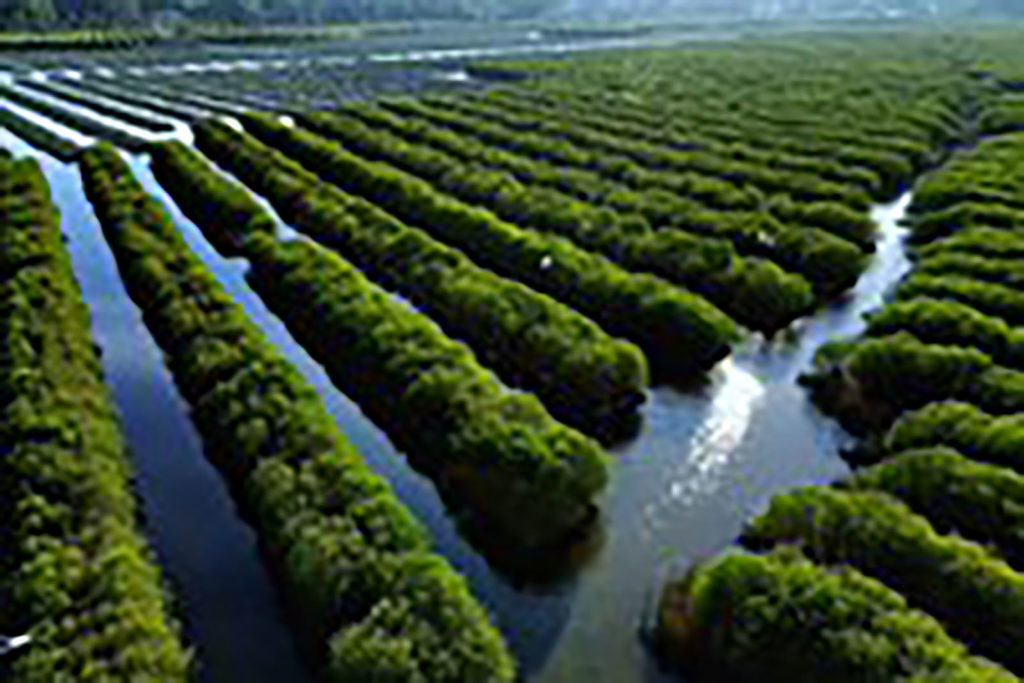Photo credit: UNDP Viet Nam
By Joanna Hausen, MIPP
When I was first introduced to the portfolio of activities for the GCF funded Coastal Resilience Project in Viet Nam, I was excited to see how it all weaved together. Although I am focused mostly on the component of the project that is concerned with compiling disaster information, I’ve had opportunities to help with the other components that focus on mangrove restoration and building resilient housing.
Risk, as I’ve been learning, can be managed through a few different ways and in most cases, requires a few risk management methods to be successful. Some of these risk management strategies include avoiding, mitigating, and transferring. With the increasing frequency and intensity of disasters and extreme weather events due to climate change, total avoidance is less and less of an option. For my previous virtual dispatch, I delved into disaster risk insurance and financing opportunities for transferring risk which has been my focal point thus far. For my final virtual dispatch, I want to share some of the interesting work being done on risk mitigation through resilient housing and mangrove restoration.
The housing component of the project seeks to improve households’ resilience to climate related impacts. The project target is to support storm and flood resilient design features for 4000 new homes in order to reach 20,000 beneficiaries in 5 central provinces in Viet Nam. The central regions of Viet Nam experienced historically high rates of flooding in recent years, and there haven’t been adequate risk transfer options for those living in repeatedly impacted regions. Resilient housing has been able to fill some of those gaps by mitigating risk which protects houses, people, and livelihoods. Housing related projects are critical to avoiding displacement, loss of economic hubs, and loss of culturally relevant housing options.
The planning for resilient housing activities relies heavily on technical expertise and buy-in from the beneficiary communities, which has allowed for design features that are both structurally sound and culturally appropriate. Among a few activities I have been able to support for this component, the most exciting has been supporting the household survey to assess the satisfaction with housing designs after they have been built. This information will help inform the performance during storms, persisting inconveniences such as access to clean water while taking shelter in upper levels, and the differing experiences of each household member. With Covid-19, there have been reduced options for ensuring participation and data collection of beneficiaries, so any opportunities to do so are hugely important for monitoring and improving activities.
The mangrove component seeks to enhance coastal forest coverage and improve mangrove quality for resilience to tide ways, carbon sequestration, and biodiversity. The aim of the project is to support the regeneration of 4000 hectares of coastal mangroves that will act as buffer zones for storms and erosion. Although I have been less directly involved with this component of the project, I support the socio-ecological approach that challenges traditional conversationist approaches to protecting nature. The mangrove activities have had high levels of participation from members of the community who see regeneration as having huge benefits to coastal communities relating to disaster resilience.
The project has also taken into consideration how mangrove restoration could impact existing livelihoods, both positively and negatively. On the one hand, mangroves act as fish spawning grounds and help keep populations healthy. On the other hand, the dense entanglement of shrubs and trees can limit seafood catches in specific areas that fishing communities may have formerly relied upon. Other income generating activities such as beekeeping have been supported to fill these gaps, and the added pollination activity further supports mangrove regeneration in these regions.
Many of the low-lying communities in Viet Nam that face climate-related impacts can’t avoid current risks. Mitigating and transferring are the options that remain, and there’s a lot of exciting work being done in both of areas by the GCF Project.
Disaster risk management requires many different types of solutions that require the contributions of many different actors working on them. Whatever your discipline may be – I implore you to think about how your area of focus and experiences could contribute to the important work of disaster risk management in your region and around the world.
